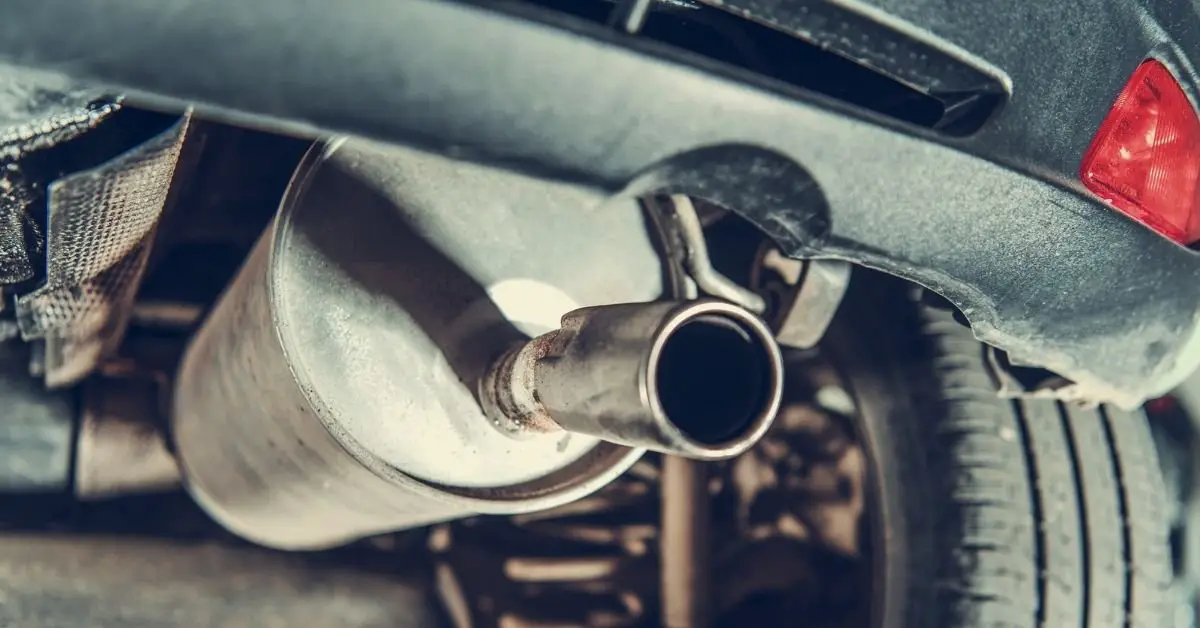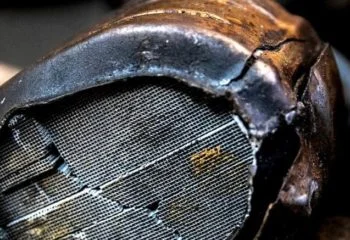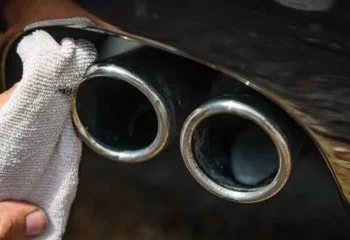Your car’s muffler is an essential part of its exhaust system. Not only does it quiet the engine, but it also removes harmful emissions from the vehicle. If your muffler is damaged or clogged, it can decrease your car’s fuel efficiency and cause harmful emissions to enter the environment. Muffler delete is the process of removing the muffler from your car’s exhaust system. This can be done for several reasons, including increasing the engine’s power or making it louder.
Are you considering a muffler delete for your vehicle? If so, you’ll want to learn about the pros and cons of this modification. In this blog post, we’ll discuss what is a muffler delete, and we’ll also take a look at the pros and cons of undertaking this modification. By the end of this post, you’ll have a good understanding of whether or not a muffler delete is right for you. Let’s get started!
What's in this post?
What is a muffler?
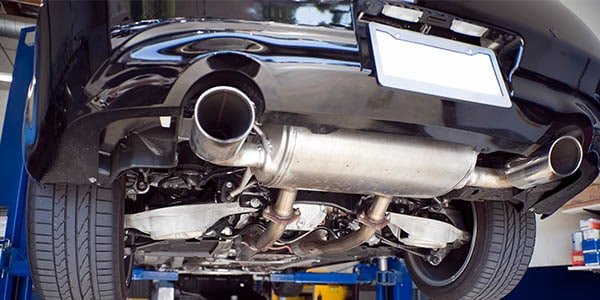
To understand what is a muffler delete we must know what is a muffler first. A muffler is a part of the exhaust system of a car. It is located between the exhaust pipe and the tailpipe. The main purpose of a muffler is to reduce noise.
It does this by using baffles to deflect sound waves and absorb them with materials such as fiberglass, EST, or cotton.
Mufflers are an important part of any vehicle, and they can play a vital role in making the ride more comfortable for passengers.
Type of mufflers
There are several different types of mufflers available on the market, each with its own advantages and disadvantages. There are two main types to choose from: the turbo muffler and the straight-through muffler
Turbo mufflers work by redirecting exhaust gas through a series of spiral chambers. This action effectively cancels out engine noise, making them a good choice for cars with loud engines. However, turbo mufflers can also create back pressure, which can reduce engine performance.
Straight-through mufflers, on the other hand, allow exhaust gas to flow through a perforated pipe. This design helps to reduce engine noise without creating back pressure. However, straight-through mufflers are not as effective at canceling out noise as turbo mufflers.
When choosing a muffler, it’s important to consider your needs and priorities. If you’re looking for maximum noise reduction, then a turbo muffler is the way to go. However, if you’re concerned about back pressure and engine performance, then a straight-through muffler might be a better choice.
What is a muffler delete and how does it work?
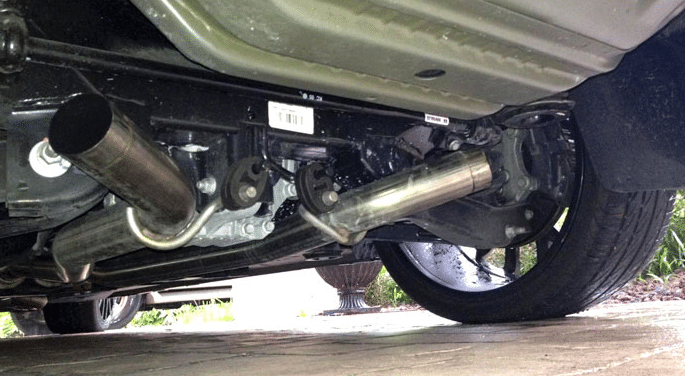
A muffler delete is a popular modification for car exhaust systems. The muffler is responsible for silencing the noise produced by the engine, and a muffler delete replaces the muffler with a straight pipe.
It can significantly increase the noise level of the exhaust, and it is often done for aesthetic reasons. In some cases, additional modifications, such as straight-piping the exhaust, may also be done as part of a muffler delete.
Some people believe that a muffler delete will improve performance, but there is no evidence to support this claim.
Mufflers can account for a very small percentage of an engine’s overall restrictions, and removing the muffler is unlikely to have any noticeable effect on performance.
Muffler delete pros
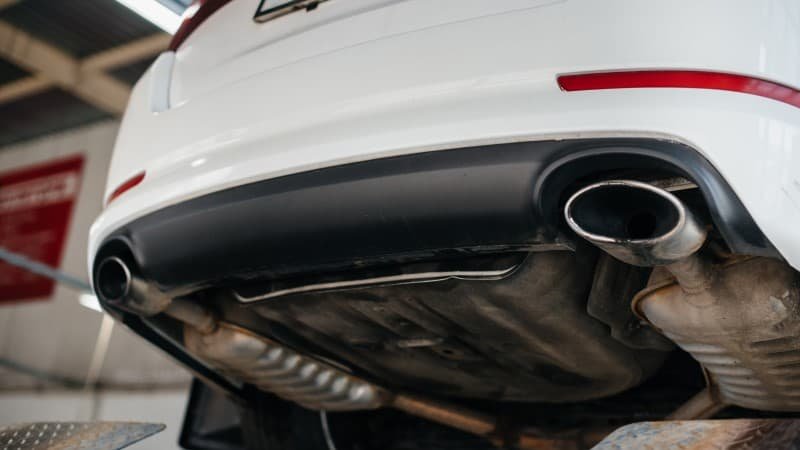
Powerful exhaust sound
There are several advantages to doing a muffler delete, the most obvious of which is increased noise.
This can be a great way to make your car stand out from the crowd, and it can also give you a sense of satisfaction that comes from knowing your car is louder than other cars on the road.
Increase horse power on the old model car
A muffler delete can also slightly increase horsepower. This simple modification can slightly reduce backpressure, which can lead to a small increase in horsepower.
Of course, this advantage is very minimal, and it is unlikely that you will notice any difference in performance after doing a muffler delete.
Muffler delete cons
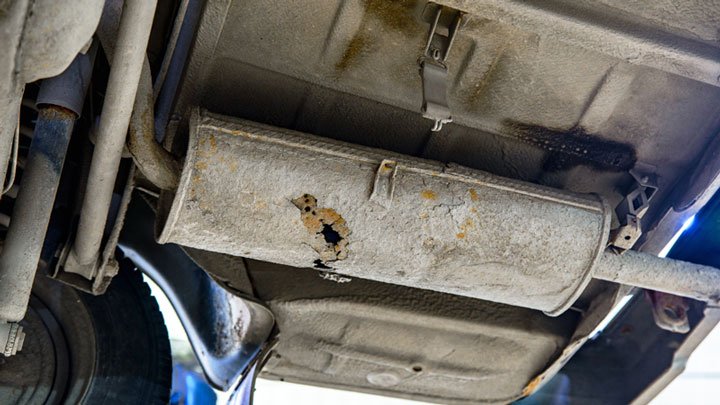
While a muffler delete may appeal to car enthusiasts who enjoy the louder exhaust note, it is important to be aware of the potential downsides.
Increased noise pollution
A muffler delete can also lead to increased noise pollution. This can significantly increase the noise level of the exhaust, and it may be considered a form of pollution.
A loud exhaust can be extremely annoying, especially if you’re trying to enjoy a quiet drive. It can also be dangerous if it makes it difficult for you to hear other cars or pedestrians.
It can also disturb your neighbors and cause them to lose sleep or miss work. In some cases, it may even lead to legal action being taken against you.
It is important to be aware of local noise ordinances before doing a muffler delete, as you may be subject to fines if your car is too loud.
Illegal
Another critical downside of a muffler delete is that it’s illegal in every state.
So, if you’re caught driving with a muffler delete, you may be subject to fines and other penalties.
Additionally, your car may be impounded, and you may even have your driver’s license suspended.
So, it’s important to make sure that you’re familiar with the laws in your state before doing a muffler delete.
How much is a muffler delete
Depending on the make and model of your vehicle, a muffler delete pipe can cost around $50 to $250.
If you’re looking for a more customized look, or if you have a high-performance vehicle, the demand for a muffler delete can be at least $100 to $500.
Labor cost is typical $50 to $200 per hour. So if the installation takes less than an hour, then you’re only looking at labor costs.
However, if it takes several hours to install, then you’re looking at a much higher bill.
To get a better idea of how much it would cost to have a muffler delete installed on your vehicle, we recommend that you contact a local muffler shop for a quote.
What affects muffler delete cost
There are several factors that can affect the cost of a muffler delete, including the make and model of your vehicle, the type of exhaust system you have, and the experience of the installer.
The type of vehicle you own: high-end or performance vehicles will require more durable mufflers that can withstand higher temperatures and harsh conditions. As a result, these types of mufflers will cost more to delete.
The make and model of your vehicle: certain makes and models of vehicles will require specific types of mufflers. For example, BMWs often require unique mufflers that can properly fit their exhaust systems.
The experience of the installer: if you choose to have a professional mechanic or experienced enthusiast install your muffler delete pipe, then you can expect to pay more for labor costs.
The location of the installation: if you live in an area with a high cost of living, then you can expect to pay more for a muffler delete.
The type of muffler delete pipe: there are many different types of muffler delete pipes available on the market. Some are made from stainless steel, while others are made from aluminum or titanium. The material you choose will affect the overall cost of the project.
The brand of muffler delete pipe: there are many different brands of muffler delete pipes available on the market. Some brands are more expensive than others.
All of these factors will play a role in determining the final cost of your muffler delete. Be sure to take all of them into consideration when getting quotes from different shops.
How to delete a muffler
If you’re looking to delete your muffler, there are a few things you’ll need to do first.
1. Find the right muffler delete pipe: as mentioned above, there are many different types of muffler delete pipes available on the market. Be sure to find one that is compatible with your vehicle.
2. Remove the old muffler: once you have the new pipe, you’ll need to remove the old muffler from your vehicle. This can be done by disconnecting the exhaust system and unscrewing the muffler from its mounting brackets.
3. Install the new pipe: now it’s time to install the new muffler delete pipe. First, connect the pipe to the exhaust system. Next, use bolts or clamps to secure the pipe in place.
4. Test it out: once the new pipe is installed, start up your vehicle and listen for any strange noises. If everything sounds normal, then you’re good to go!
Keep in mind that deleting your muffler will likely void your vehicle’s warranty. Be sure to weigh the pros and cons before making any decisions.
Resonator vs muffler
Many people believe that a resonator and a muffler are the same things. However, there are some important differences between the two.
The main difference between a resonator and a muffler is that a resonator is designed to cancel out specific frequencies of sound while a muffler is designed to muffle the overall noise of an engine.
Your car’s exhaust system has two main purposes: to safely route fumes away from the engine and to muffle noise. Mufflers and resonators work together to accomplish the latter goal.
Mufflers are typically located at the very end of the exhaust pipe, while resonators are usually situated further up the line.
Both mufflers and resonators use sound-blocking materials, such as fiberglass or metal mesh, to reflect incoming noise waves and reduce the overall volume.
However, mufflers also contain perforated tubes that allow some exhaust gases to pass through, which creates a “canceling” effect that further reduces noise.
Together, mufflers and resonators can effectively keep exhaust volume at a reasonable level. Both mufflers and resonators can be changed, combined with other exhaust modifications, or entirely removed if you want a louder exhaust.
Resonator delete vs muffler delete
When it comes to improving your car’s sound, there are a few different options available. Two of the most popular choices are a resonator delete and a muffler delete.
Both of these options will help to improve the sound but they work in different ways.
A resonator delete involves removing the resonator from your exhaust system. This helps to improve the noise of your car by allowing gases to flow more freely. However, it can also lead to increased noise levels inside the cabin.
A muffler delete, on the other hand, involves removing the muffler from your car. This helps to improve the sound of your car by allowing gases to escape more quickly.
However, it can also lead to increased noise levels outside the car.
Needless to say, deleting both resonator and muffler will make your car extremely loud. It is not recommended unless you are looking to enter your car in competitions or shows.
Let’s take a deeper look at each of these options to help you decide.
Useful read: What is EGR delete and its pros and cons?
Sound improvements
Both a resonator delete and a muffler delete can help to improve your car’s sound. However, the type of sound improvement will differ depending on which option you choose.
A resonator delete will generally result in a deeper, throatier sound, while a muffler delete will usually result in a louder, more aggressive sound.
Noise levels
Another key difference between a resonator delete and a muffler delete is the effect that they have on noise levels.
A resonator delete can lead to increased noise levels inside the cabin, while a muffler delete can lead to increased noise levels outside the car.
If you’re looking for a way to improve the sound of your car without attracting too much attention, then a resonator delete may be the better option.
However, if you don’t mind a little extra noise, then a muffler delete may be the way to go.
Performance
In addition to sound improvements, both a resonator delete and a muffler delete can also lead to minor performance gains.
By removing restrictions in the exhaust system, both of these options will help to increase airflow and improve engine efficiency.
However, the performance gains are generally quite small and are unlikely to be noticeable unless you’re an experienced driver.
Fuel Economy
One difference between a resonator delete and a muffler delete is the effect that they have on fuel economy.
A resonator delete will generally have no effect on fuel economy, while a muffler delete can lead to a small decrease in fuel economy.
This is due to the fact that a muffler delete will usually result in increased engine noise, which can lead to higher levels of engine resistance.
So, if you’re looking for a way to improve your car’s sound without sacrificing fuel economy, then a resonator delete may be the better option.
Cost to delete
Another important consideration is cost. Both a resonator delete and a muffler delete are relatively inexpensive modifications that can be easily installed at home.
However, a muffler delete will usually be more expensive than a resonator delete as it generally requires the purchase of a new muffler.
Legality
Finally, it’s worth noting that both a resonator delete and a muffler delete are illegal in most jurisdictions.
So, if you’re planning on doing either of these modifications, be sure to check the laws in your area first.
Muffler delete vs straight pipe
When it comes to modifying your vehicle’s exhaust system, there are a few different options to choose from. Two of the most popular choices are muffler deletes and straight pipes.
How they work
Muffler deletes involve removing the muffler from the exhaust system and replacing it with a straight pipe. This modification can be done for both aesthetic and performance reasons.
A straight pipe is a form of exhaust modification in which the muffler, resonator, and CAT (catalytic converter) are removed from the exhaust system and replaced with a straight pipe. This is typically done for performance reasons, as it can increase horsepower and torque.
Sound improvement
A muffler delete results in a significant increase in noise, as there is no longer any restriction on exhaust flow.
Straight pipes are also much lighter than mufflers, so you may see a slight improvement in performance. However, because there is no longer any sound-damping material, exhaust noise will be considerably louder with a muffler delete.
A straight pipe, on the other hand, results in increased noise and weight savings. However, because the straight pipe uses larger diameter piping than the factory exhaust, you’ll also see an increase in airflow and horsepower.
If you’re looking for the best performance possible, a straight pipe is a way to go.
Power gain
The power gain of a muffler delete vs straight pipe delete largely depends on the engine type.
In general, a four-stroke engine will see more power with a straight pipe, while a two-stroke engine will perform better with a muffler delete.
The reason for this is that four-stroke engines rely on scavenging to boost performance, and a straight pipe allows exhaust gases to exit the cylinder more quickly.
Two-stroke engines, on the other hand, are more dependent on turbulence. A muffler delete helps to create a more turbulent flow, which can lead to a power increase.
Ultimately, the best way to determine which exhaust system is right for your car is to consult with a professional mechanic.
They will be able to take into account your car’s make and model, as well as your driving habits, to find the exhaust system that will provide the best performance gains.
Fuel economy
While a straight pipe or muffler delete can lead to a slight increase in horsepower, there is also a potential decrease in fuel economy.
The reason for this is that the increased airflow can cause the engine to run leaner, which can result in less fuel being burned.
If you’re looking to get the most out of your car’s fuel economy, you may want to avoid a straight pipe or muffler delete.
Emissions
Another consideration when deciding between a muffler delete and straight pipe is emissions.
Because straight pipes allow exhaust gases to exit the engine more quickly, they can potentially reduce emissions.
Muffler deletes, on the other hand, can actually increase emissions due to the increased noise and turbulence.
If you live in an area with strict emissions regulations, you may want to avoid a muffler delete.
ECU tuning required
While a muffler delete will work without ECU tuning, straight piping will require it in order to function properly.
This is primarily due to the fact that straight piping results in an increase in horsepower, which requires the ECU to adjust the air/fuel ratio accordingly.
In addition, ECU tuning is necessary to turn off the check engine light that will otherwise be triggered by the removal of the muffler.
Legality
Both are illegal in all 50 states. If you want to do it, you will have to get your car inspected and tuned by a professional.
While a muffler delete is technically legal in most states, the increased noise levels can result in a noise violation.
In general, it’s best to avoid both exhaust modifications if you don’t want to risk getting pulled over.
Cost
The cost of a muffler delete vs straight pipe will vary depending on the make and model of your car, as well as the quality of the parts used.
In general, straight pipes are more expensive than muffler deletes because they require more parts.
Muffler deletes are also more labor-intensive, so you can expect to pay more for installation.
Ultimately, the best way to determine which exhaust system is right for your car is to consult with a professional mechanic.
They will be able to take into account your car’s make and model, as well as your driving habits, to find the exhaust system that will provide the best performance gains.
Muffler vs exhaust: what’s the difference?
An exhaust system is designed to remove combustion gases from an engine. It typically consists of a series of pipes that lead from the engine to the back of the vehicle, where the gases are released into the atmosphere.
The main purpose of an exhaust system is to improve engine efficiency and reduce emissions. In addition, it can also help to reduce noise levels.
The biggest difference between mufflers vs exhaust is their purpose. A muffler is designed to reduce noise, while an exhaust system is designed to improve engine efficiency and reduce emissions.
Another difference between a muffler vs exhaust is that a muffler typically has more chambers and baffles than an exhaust system. This helps to further reduce noise levels.
Finally, most mufflers are made of metal, while exhaust systems can be made of either metal or plastic.
Why it is important to know the difference?
It is important to know the difference between muffler vs exhaust because they play different roles in your car. If you are having issues with noise, then you will want to focus on finding a good muffler.
However, if you are having engine performance issues, then you will want to focus on finding a good exhaust system.
Knowing the difference between muffler vs exhaust can also help you save money. If you replace your muffler when all you need is a new exhaust system, then you will end up spending more money than necessary.
On the other hand, if you replace your exhaust system when all you need is a new muffler, then you might not get the performance benefits that you are hoping for.
FAQs
Can a muffler delete damage to your car?
No. Muffler delete will not damage your engine or any other part of your car.
Can I do a muffler delete myself?
Yes. You can do a muffler delete yourself if you have some basic mechanical skills. If you’re not familiar with cars, it’s best to leave this modification to a professional.
Do I need to tune my car after doing a muffler delete?
No. You do not need to tune your car after doing a muffler delete.
Does a muffler delete sound good?
You’ll most likely enjoy better sound when straight piped. However there are some cars that have a specializing tone and may not benefit as much from this installation option, but overall it should be pretty roses!
Is a muffler delete better than a muffler?
Yes for old car models, but for new models it does not make much of a difference.
For older car models, a muffler delete is often the better option. This is because the exhaust system is not as efficient on older models, so the muffler delete can help to improve performance.
However, on newer car models, the difference between a muffler delete and a muffler is not as significant.
This is because newer car models have more efficient exhaust systems that do not need as much assistance from a muffler.
Will a muffler delete get a check engine light (CEL)?
When you remove the stock muffler, your car’s performance will suffer and this can cause problems with both check engine light as well CEL. The OBD2 tool has been designed to quickly identify if there are any issues plaguing our vehicles so we don’t have these worries anymore!
Can you put muffler back on after delete?
Yes, you can put a muffler back on after doing a muffler delete. You can just have them welded up or spend some time with a reputable muffler shop and set it up in clamps.
Can you pass smog with a muffler delete?
No. Muffler delete is not legal and will not pass smog. A muffler delete removes the muffler from the vehicle, resulting in increased noise pollution.
Additionally, the increased noise can be a distraction to other drivers, which can lead to accidents.
Moreover, without a muffler, exhaust gases are not properly filtered, which can cause respiratory problems for both you and your passengers.
Does a muffler delete use more gas?
No. Muffler delete will not have any negative impact on gas mileage. In fact, you may even see a slight increase in gas mileage due to the increased airflow.
Do a resonator necessary on my exhaust?
A resonator is not necessary for your car to run, but it can be beneficial in reducing noise pollution and making the car more pleasant to drive.
Is it illegal to remove a resonator?
In most jurisdictions, it is illegal to remove a resonator from your car. So, if you’re planning on doing this modification, be sure to check the laws in your area first.
Can I do a muffler delete without a resonator delete?
Yes, you can do a muffler delete without a resonator delete. However, if you’re looking for the best possible sound improvement, then doing both may be the best option.
What is quieter a resonator or muffler?
A resonator is designed to reduce noise, while a muffler is designed to improve the sound of your car. As such, a resonator will usually be quieter than a muffler.
Can I put straight pipe in place of my resonator?
Yes, you can install a straight pipe in place of your resonator. However, this will likely lead to increased noise levels inside the cabin.
Can I use a resonator instead of a muffler?
The resonator is the muffler’s best buddy. It handles all of those high-pitched noises that might ruin your day or night, as well as whines and buzzes!
Plus it creates a smoother exhaust note so you don’t have to worry about waking up anyone else with too much noise from down below (not saying anything).
Conclusion
A muffler delete is a popular modification for many car enthusiasts. The main benefit of this modification is the increased sound and performance of the vehicle. While there are many benefits to this modification, there are also some potential drawbacks that should be considered before making a decision.
One of the main benefits of a muffler delete is the increased sound of the vehicle. This can be a great benefit for those who want their car to stand out from the rest. The increased sound can also add to the performance of the vehicle. Another benefit of this modification is the potential increase in horsepower. This can be a great benefit for those who are looking to increase the performance of their vehicle.
However, there are some potential drawbacks that should be considered before making a decision to delete the muffler. One of the main drawbacks is the increased noise level of the vehicle. This can be a problem for those who live in areas where noise ordinances are in place. Another drawback is illegal. Finally, there is the potential for increased emissions. This is something that should be considered if the vehicle is going to be driven in an area where emissions testing is required.
We hope you understand what is a muffler delete. If you have any questions or would like to learn more about muffler deletes, feel free to leave a comment below.

